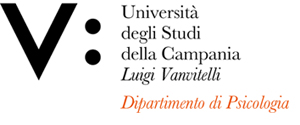Proposal Title
AutoNomous DiscoveRy Of depressIve Disorder Signs
Acronym
ANDROIDS
ERCs
- Macro Area PE6 Computer Science and Informatics: Informatics and information system, computer science, scientific computing, intelligent system
Area PE6_7 Artificial intelligence, intelligent systems, multi agent systems
SSC 01/B1 – INFORMATICA
- Macro Area SH4 The Human Mind and Its Complexity: Cognitive science, psychology, linguistics, philosopy of mind
Area SH4_4 Cognitive and experimental psychology: perception, action, and higher cognitive processes
SSC 11/E1 – PSICOLOGIA GENERALE, PSICOBIOLOGIA E PSICOMETRIA
- Macro Area PE6 Computer Science and Informatics: Informatics and information system, computer science, scientific computing, intelligent system
Area PE6_10 Web and information systems, database systems, information retrieval and digital libraries, data fusion
SSC 09/H1 – SISTEMI DI ELABORAZIONE DELLE INFORMAZIONI
Keywords
- ON-LINE HANDWRITING FEATURES
- VERBAL AND NON VERBAL FEATURES
- ALGORITHMS FOR MACHINE LEARNING AND ARTIFICIAL INTELLIGENCE
- ALGORITHMS FOR SPEECH AND IMAGE PROCESSING
- DEPRESSIVE DISORDERS
- EMOTIONAL STATES
- SPONTANEOUS INTERACTIONAL EXCHANGES
- MODELS AND LANGUAGES FOR DATA FUSION
Objectives
The main goal of this project is to gain knowledge on how verbal and nonverbal communicative features are elicited during healthy/depressed interactional exchanges in order to addresses in a holistic way and by means of a novel method of data acquisition and analysis paradigms, the problem of the early detection of depressive disorders. As this project team is composed of people belonging to two main scientific areas (computer science/mathematics and psychology) that sincerely understand the value of a multidisciplinary work, the final goal of the project is to build upon human-driven and data-driven knowledge to boost as much as possible the capability of human operators to detect depressive disorders.
Creating a study methodology would be the first step to think about future portability of the results of this research towards other clinical and non-clinical open fields.
The reaching of this goal is realized by these concrete objectives:
- Objective 1: definition of an overall methodology for the trait acquisition and the analysis of a subject;
- Objective 2: definition of a catalogue of features of interest in the classification of health/depressed behaviours;
- Objective 3: design and development of a database collecting data from psychological experiments classified
- according to their belonging/not belonging to the specific psychological disorder;
- Objective 4: definition of a set of methods and algorithms for the automated detection of depressive disorders;
- Objective 5: definition of a knowledge base able to reveal new psychological dynamics by integrating human-driven and data-driven facts.
Implementation: performance of the Intermediate and final objectives and relative timeline
The project is structured in the following tasks:
- TASK I: Review on depressive features
- TASK II: Corpus Definition and data acquisition
- TASK III Annotation and Cross-modal Analysis of Data
- Task IV - Complexity reduction of multidimensional database
- Task V - Modelling multidimensional processing of emotional states in depressive disorders
Methodology
The research carried through this project can be seen as a meta-methodology based on two main activity streams. The first one concerns basic cognitive communication processes and it is concentrated on psychological, neuropsychological, verbal and nonverbal expressions of interactions. The second is technological and tightly related to prototype implementation on the basis of specifications obtained from the abovementioned behavioural analysis. It focuses on computational paradigms of feature extraction, encoding, automatic access, detection and recognition of interactional entities (gesture, speech, gaze direction, facial expressions, affective states, etc) contained in multimedia recordings of human dyadic interactions.
Looking at the psychological issue, the present research will lead to:
- A theoretical re-definition and re-assessment of the verbal and nonverbal communication features, identifying new communicative signals' repertoires describing cognitive, semantic, emotional, and semiotic mechanisms essential to the processing of social signals.
- An advancement in the comprehension of the existing relationships among human communication modalities and communication message planning processes.
- The identification of verbal and nonverbal interactional persuasive and effective strategies and contextual instances calling for their use.
Looking at the technological issue, the present research will lead to:
- The definition of effective and efficient algorithms for social learning and interaction analysis;
- The definition of methods for the maintenance and management of objects hierarchically structured (communicative signals), time-dependent and jointly connected through complex relations (their meanings);
- The definition of autonomous systems granting an efficient human-machine interaction and favouring the development of emotionally and socially believable user-friendly applications for remote healthcare and assistive services;
- The definition of models of human behaviour embedded within complex autonomous systems in order for them to gain user trust and acceptance, endowed of emphatic competencies to appear socially believable.
Results and project time schedule breakdown
The results of the project will be available in the following deliverables that will be published on the project
website.
- Deliverable 1: State of art on instruments and methodologies for measuring everyday social functioning of healthy and depressed subjects. This deliverable is expected at Month 6;
- Deliverable 2: Definition of a catalogue (database) of audio, video and text data (the questionnaires administered) and detailed descriptions of experimental set-ups and motivations guiding the definition of dialogues, and elicitation techniques. This deliverable is expected at Month 18;
- Deliverable 3: Analysis and labelling of the catalogue (database) of psychological experiments. This deliverable is expected at Month 18;
- Deliverable 4: Data complexity reduction of the catalogue of psychological experiments. This deliverable is expected at Month 18;
- Deliverable 5: Multidimensional models, knowledge extraction techniques and algorithms for the early detection of depressive disorders from dyadic interactional exchanges. This deliverable is expected at Month 24.
In the middle of the project (M12) the following deliverables and artefacts will be partially available to evaluate the progress of the project:
- Deliverable 1: the final form;
- Deliverable 2: first draft illustrating and presenting part of the collected data;
- Deliverable 3: first draft illustrating the defined methodology and techniques;
- Deliverable 4: first draft illustrating the defined methodology and techniques.
This notwithstanding, at the end of the research project there could be a revision of part of the deliverables
already released in order to update them with results of following activities and tasks.
The deliverables contribute to reach the proposed objectives according to the following mapping:
- the achievements of Objective 1 will be demonstrated in Deliverable 5;
- the achievements of Objective 2 will be demonstrated in Deliverable 2;
- the achievements of Objective 3 will be demonstrated in Deliverable 2;
- the achievements of Objective 4 will be demonstrated in Deliverable 5;
- the achievements of Objective 5 will be demonstrated in Deliverable 5.


















